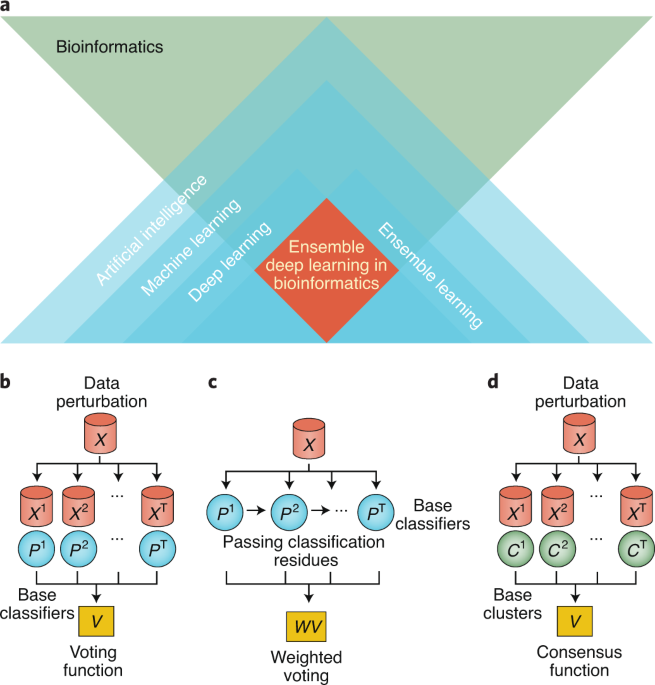Bioinformatics Tutor Fundamentals Explained
The Ultimate Guide To Bioinformatics Tutor
Table of ContentsGetting The Bioinformatics Tutor To WorkA Biased View of Bioinformatics Tutor7 Simple Techniques For Bioinformatics Tutor6 Easy Facts About Bioinformatics Tutor DescribedBioinformatics Tutor Things To Know Before You Get This
Of the total amount participants associated with the training, 80% were trainees from public greater education and learning establishments, while the staying 20% came from personal organizations. To get approved for a certification of engagement, pupils were required to attend a minimum of 90% of the total training hours. As an outcome of this demand, an excellent 95% of the individuals successfully obtained their certifications, having not only satisfied the minimum participation requirements but additionally finished all assigned tasks throughout the training.
Throughout the height of the COVID-19 pandemic, especially in between June and August 2020, the job team was entrusted with organizing specialized training in bioinformatics. This training was especially aimed at pupils from the study team Center for Research in Applied Computing at the Federal University of Pará (UFRA) The adaptation to remote understanding systems because of the pandemic developed a chance to explore new training approaches and digital devices that improved both reach and performance.
This training course was designed to provide an easily accessible yet comprehensive summary of Artificial Intelligence methods, especially as used in bioinformatics (Bioinformatics Tutor). This virtual format made it possible for participation from students throughout Brazil, several of whom may not have had the opportunity to attend in-person sessions.
The Only Guide for Bioinformatics Tutor
A remarkable attribute of this training course was its emphasis on hands-on discovering. Around 50% of the complete training hours were committed to useful activities where students built smart designs and applications in a variety of scientific domains, consisting of genetics, molecular biology, and environmental data analysis. Extensively made use of frameworks and tools such as Spyder, Google Colab, Jupyter Notebooks, and Orange were incorporated right into the coursework. These platforms allowed pupils to participate in real-time data control, version training, and formula trial and error.
The course drew in 80 participants in overall. Sixty of them were associated with numerous college institutions in the state of Pará, while the staying twenty came from establishments located in 5 various other Brazilian states. This wide geographical depiction highlighted the national passion in bioinformatics and the growing need for specialized abilities around. By introducing Artificial Intelligence in a useful and pertinent context, the effort offered to connect the void Check This Out between concept and real-world application, providing pupils with a solid foundation for future research or work in the area.
The training initiative created component of a wider scholastic outreach effort known as the Bioinformatics on the Roadway task. This job has, throughout the years, presented lots of trainees to the globe of bioinformatics and computational biology. The events held under this umbrella effort have actually happened throughout several areas and years, as summarized in Table 1 (Listing of occasions, areas, years, and overall numbers of students and instructors)
Numerous of these teams, originally brought with each other by their participation in training events, have since gone on to create independent clinical research in collaboration with neighborhood academic establishments. The training not only fostered clinical reasoning within the context of bioinformatics however additionally stimulated collective relationships that expanded beyond the training environment.
Bioinformatics Tutor Can Be Fun For Anyone
The same team, leaving out IH and RR, also acted as tutors for the sensible training modules. Financing for the project was given through the give 88887.200562/ 2018-00 from CAPES.
The Federal University of Pará's Workplace of Research (PROPESP/UFPA) likewise provided economic support, especially for the production of the last manuscript. The authors declare no business or monetary problems of rate of interest that could have affected the research. In addition, all analyses and point of views expressed in this short article are exclusively those of the writers and do not necessarily reflect those of their particular organizations, the author, editors, or reviewers associated with the magazine procedure.

How Bioinformatics Tutor can Save You Time, Stress, and Money.
From a pedagogical perspective, the training method utilized in the training was deliberately interactive. additional reading Classes were conducted in a manner that encouraged pupil engagement and conversation, going past memorizing memorization to discover exactly how ideas are established, applied in day-to-day live, and tested in academic setups. The educational ideology concentrated on supporting both solid and struggling students, offering individualized support, and structure self-confidence with sustained mentorship and patience.

Each group, containing roughly 36 participants, was sustained by 3 coaches-- the majority of whom were postdoctoral researchers with specialized experience. These advisors not only assisted develop the group tasks yet likewise facilitated their implementation, making certain that each research study concern was both pertinent and properly tough. The goal was to provide a naturally sensible context that participants can check out via flexible objectives and accessibility to curated datasets.
For extra understandings right into the methodology and end results of this project-based discovering method, viewers are guided to S1 Text, that includes thorough descriptions of the instructional framework, analysis methods, and project motifs used in the training sessions.
About Bioinformatics Tutor
Of the total individuals entailed in the training, 80% were trainees from public greater education organizations, while the continuing to be 20% came from personal establishments. To certify for a certificate of engagement, students were required to participate in at least 90% of the overall training hours. Especially, beyond the trainees that enlisted in the training sessions, seven knowledgeable teachers took part in supplying the training courses, while three specialized study teachers collaborated the general training process. Roughly 50% of the total training hours were dedicated to functional activities where trainees constructed smart versions and applications in an array of clinical domain names, consisting of genes, molecular biology, and environmental data analysis. The training not just cultivated scientific thinking within the context of bioinformatics but also sparked collective partnerships that prolonged past the training setting.